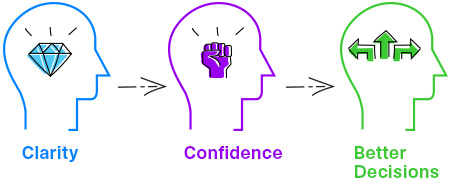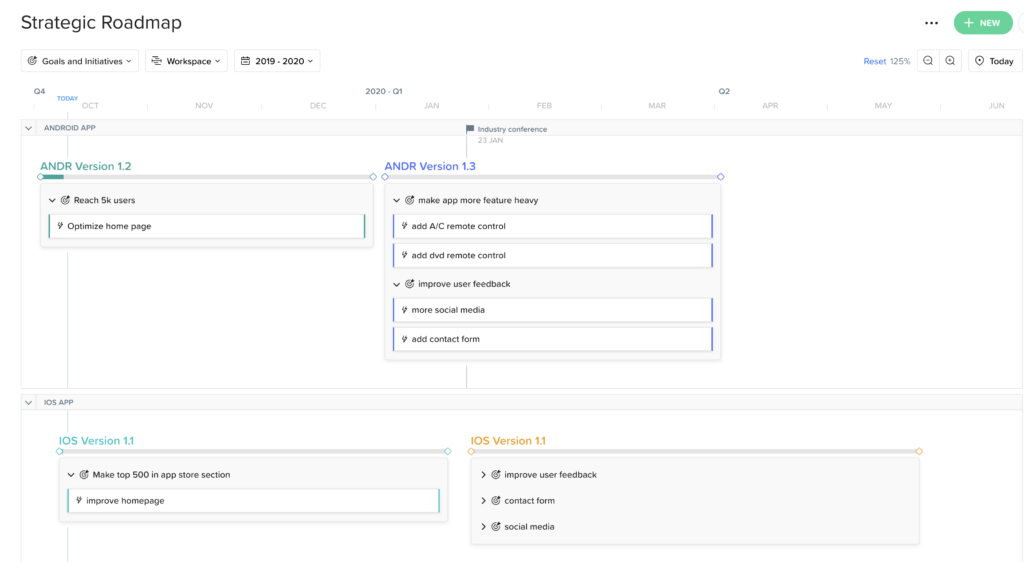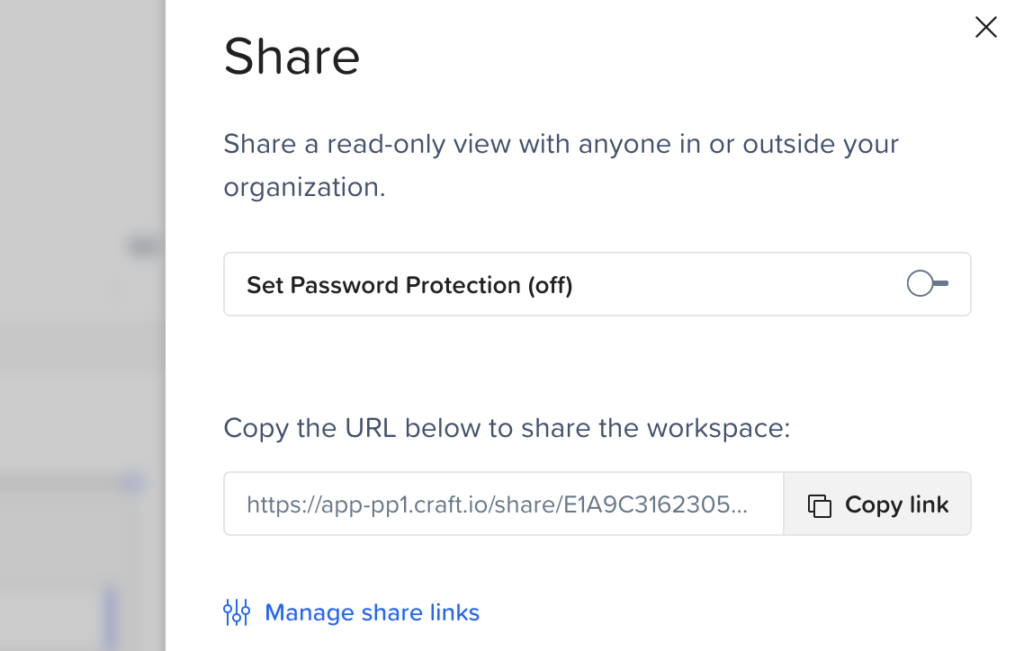Home > Blog > 3 key product decisions every product manager has to make
3 key product decisions every product manager has to make

Decisions, decisions!
Life’s full of them – from life-changing choices such as if you should accept that enticing job offer or relocate to another country to those smaller things like what to have for lunch!
And decision-making is a central aspect of the product management role: the success of the product depends on the ability to make the right decisions at the right time and then communicate them effectively.
As a product manager it is up to you to set the direction, select which features will be developed and decide how they will work in practice. The wrong decision can have a huge impact on how many people end up buying and using the product.
Clear, confident and transparent decision making is also crucial for ensuring a successful and smooth development process. The product owner rarely has direct managerial authority over anyone in the teams they rely on, so having confidence in the major product decisions will naturally have a positive impact on the atmosphere and belief within the teams that build and promote the product.
The “3 Ws”
The key decisions every product manager needs to make come down to what we can call the “3 Ws”: Where, What and When.
Product Managers have to decide:

- The “Where” is all about deciding on your product strategy – it is up to the product manager to decide on the focus and overarching goals for the product.
- The “What” is about choosing which of the numerous ideas, feature requests and proposals that you have collected will be added to your backlog and potentially become real features in your product.
- And the “When” is the prioritization process, deciding the order the features in the backlog should be developed in.
The Holisitic Approach
There are numerous decision making models, frameworks and approaches out there, ranging from the Eisenhower Matrix to Bain’s Rapid Framework.
But product decision making will always be enhanced when you can organize and view your product information in a holistic manner, in one location. This is one of the main advantages of using a dedicated product management platform to plan and manage your product.
It gives you an updated 360 degree view of the current status of your product development, backlog and potential features, increasing what can be termed “product confidence”: when you have a full picture of your product you’ll get the clarity you need to feel confident and make better product decisions

Where: Setting the Strategy
Your product strategy is the starting point for the entire product planning process. All of the features you decide to develop should fit with the strategy, so it is essential to set it before making more detailed decisions.
The type of strategy depends on where you are in the product life cycle. If you are creating a new product from scratch you should be looking at what will be included in the MVP so you can send an initial version to market. Whereas if you are working on an existing product you should be looking at how it is performing, how it can be improved and what will attract more users.
This strategy can then be expanded on and laid down in your strategic roadmap, which lists all of your product goals for each quarter and the initiatives you plan to put in place in order to achieve those goals.

It’s also important that your strategy is aligned with the other products so if everyone in the product team is using the same product management platform it’s easy to check the other product strategies and the overall product strategy for the whole team.
What: Choosing features
Once you’ve set your strategy you need to build a backlog of potential features that will be added to your product. Usually the problem here isn’t a lack of options – product managers can be inundated with suggestions and proposals from every direction, be they customer feature requests, ideas from management or market trends you’ve noted down.
Having a single source of information where you can save and access all the feedback and ideas makes it much easier when it comes to choosing what should be added to the list. With a dedicated product management platform you can have your feedback manager directly integrated with the features list so you can easily see which ideas are most popular and should be turned into real features.

When: Prioritization
Prioritizing the backlog is the bane of many a product manager’s existence! It’s never easy to decide which features to push to the top of the pile and which should be left waiting in the backlog.
A centralized product management platform can make this process much quicker and simpler. For example, you can give each feature a “Value” score, which shows how beneficial you think it will be to the users, and also set the estimated development effort according to the advice from the head of the development team. (See how craft.io customer Acolad improves prioritization through centralized product content.)
If you then create a custom field called “Priority level” which uses a formula that subtracts the development effort from the value you can sort the list by priority and instantly see which features have the highest value and lowest effort.

When to Apply the 3 Ws: Product Management Examples
Because product teams will always have more ideas for features, functionality, and new products than they have the resources to work on simultaneously, these teams should filter all of their product management decisions through the 3Ws approach.
But there are certain cases in which going through this exercise — determining the product’s direction, the specific features to build, and the priority order to develop each feature — can play a pivotal role in the company’s success. Here are two common examples of product management scenarios when the 3Ws exercise should be a top priority:
A startup developing its first product.
When a business is in startup mode, before it has launched its first product, the organization will face several unique limitations — the most significant being lack of revenue and, most likely, a small team. Both challenges heighten the need for this business to make product management decisions that maximize its ROI on each of the 3Ws.
A company pivoting to a new product strategy.
A pivot in product strategy often requires diligent attention to the 3Ws — because the product management team has clearly identified a shift in the market that threatens the ongoing success of its current product, and they need to go through the process of prioritizing the product’s Where, What, and When all over again.
One great example of this is Flickr, which launched in 2004 as an online role-playing game. But usage data showed that the game’s built-in photo-sharing tool was overshadowing the game itself in popularity. So, the company made the product management decision to redirect its focus and become an online photography company.
Stay in touch
Using a product management platform improves overall communication, which can significantly enhance the decision-making process. It can encourage other members of your team to get involved and give their feedback and it increases transparency.
It’s always worth getting extra opinions and perspectives when making product decisions and when the main people in each of the teams you deal with have access to the platform it makes it simple for them to weigh in and contribute by leaving comments on the page.
You can also create a live link to any section in a product management platform like craft.io and then share it with any team member or even customers so they are always aware of your product plans. When every member of the team can see what you are planning and why, they’ll have a clearer picture of why the features they are working on are important to the product and will feel more motivated.

Make better product decisions
So there are clear advantages to using a dedicated product management platform. But despite this, don’t expect the software to make decisions for you!
At the end of the day it will provide you with the information but the final call has to be yours. However, with all the information integrated and at your fingertips you’ll find it much easier to come to a confident decision about where your product should be heading, what should be developed and when it should be developed.
Enhance your decision making with craft.io
Craft’s Product Management Platform has been specifically designed to streamline the product planning process and help product managers make better decisions as a result. Try it out right now with a 14-day free trial or book a personal live demo with one of our product experts.


